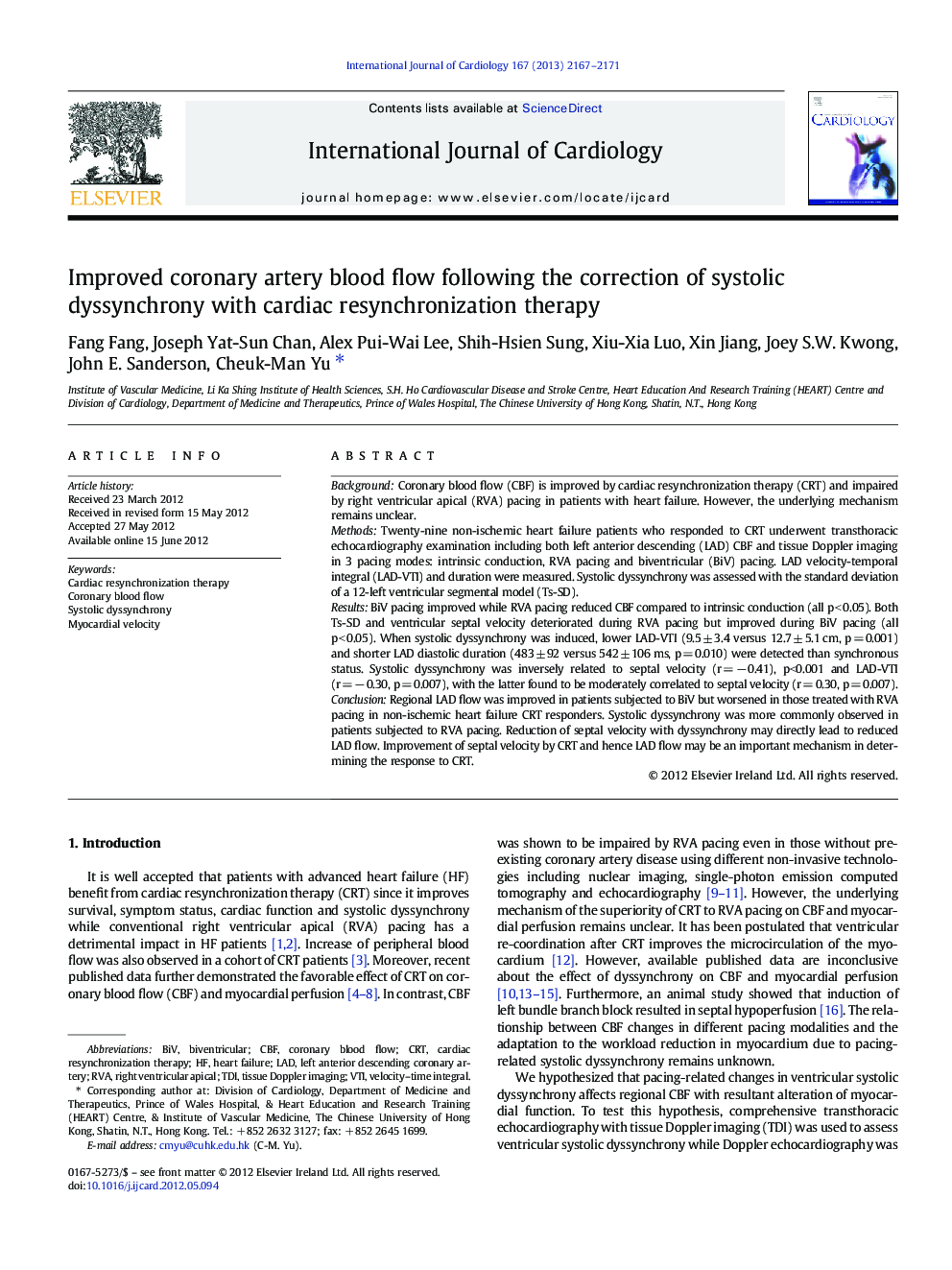| کد مقاله | کد نشریه | سال انتشار | مقاله انگلیسی | نسخه تمام متن |
|---|---|---|---|---|
| 5977283 | 1576213 | 2013 | 5 صفحه PDF | دانلود رایگان |
BackgroundCoronary blood flow (CBF) is improved by cardiac resynchronization therapy (CRT) and impaired by right ventricular apical (RVA) pacing in patients with heart failure. However, the underlying mechanism remains unclear.MethodsTwenty-nine non-ischemic heart failure patients who responded to CRT underwent transthoracic echocardiography examination including both left anterior descending (LAD) CBF and tissue Doppler imaging in 3 pacing modes: intrinsic conduction, RVA pacing and biventricular (BiV) pacing. LAD velocity-temporal integral (LAD-VTI) and duration were measured. Systolic dyssynchrony was assessed with the standard deviation of a 12-left ventricular segmental model (Ts-SD).ResultsBiV pacing improved while RVA pacing reduced CBF compared to intrinsic conduction (all p < 0.05). Both Ts-SD and ventricular septal velocity deteriorated during RVA pacing but improved during BiV pacing (all p < 0.05). When systolic dyssynchrony was induced, lower LAD-VTI (9.5 ± 3.4 versus 12.7 ± 5.1 cm, p = 0.001) and shorter LAD diastolic duration (483 ± 92 versus 542 ± 106 ms, p = 0.010) were detected than synchronous status. Systolic dyssynchrony was inversely related to septal velocity (r = â 0.41), p<0.001 and LAD-VTI (r = â 0.30, p = 0.007), with the latter found to be moderately correlated to septal velocity (r = 0.30, p = 0.007).ConclusionRegional LAD flow was improved in patients subjected to BiV but worsened in those treated with RVA pacing in non-ischemic heart failure CRT responders. Systolic dyssynchrony was more commonly observed in patients subjected to RVA pacing. Reduction of septal velocity with dyssynchrony may directly lead to reduced LAD flow. Improvement of septal velocity by CRT and hence LAD flow may be an important mechanism in determining the response to CRT.
Journal: International Journal of Cardiology - Volume 167, Issue 5, 1 September 2013, Pages 2167-2171
